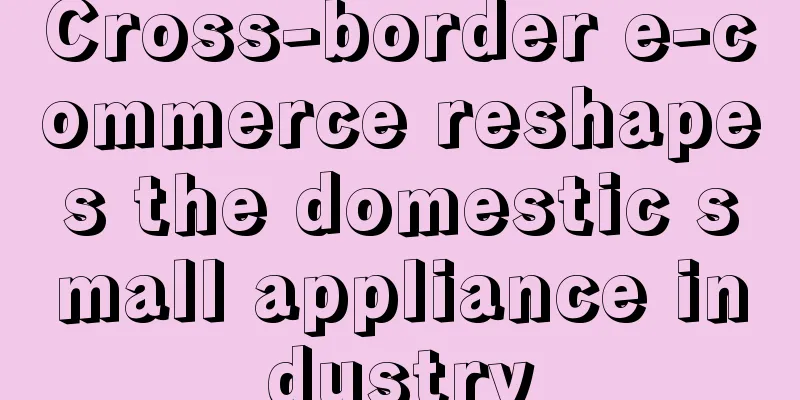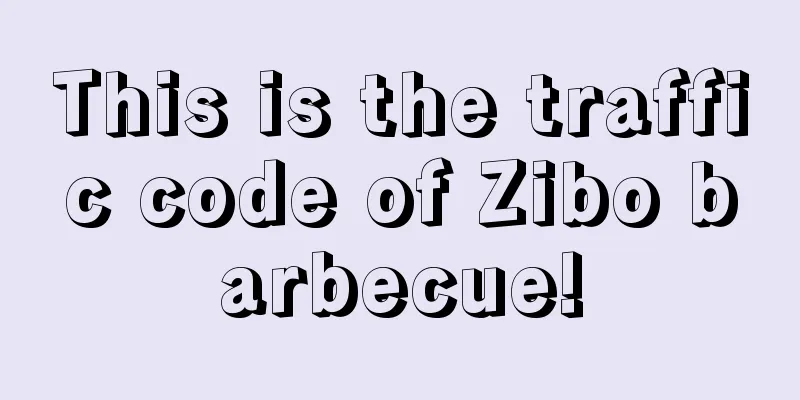Brand No. 1: Position, rhythm, strategy, and strength

When they found us, they already had a preliminary version of the product. The biggest problem they faced was how to find selling points, then make pricing suggestions, combine selling points with pictures and texts, produce content and find KOLs to distribute it, and drive traffic and monetization. First of all, the definition of the category is: whether you are selling a kettle or a teapot, these are two categories. Consumers of different categories have different psychological price acceptance, and the channels and promotion methods are also different, so naturally the pricing is also different.
Now, looking back at this project, if it is put into 21 years, this is a typical story of new consumer entrepreneurship, the new consumer brand from 2105 to 2016, called mass innovation and mass entrepreneurship. When we talk about new consumer products, what are we talking about? I think it is essentially about how to do business.
1. Omni-channel, full-cycle, and full-mediaThe five dimensions of business: global vision, user perspective, category differentiation, 4P logic, breaking circle thinking, and growth strategy. Based on these five dimensions, we need a global view, a stage theory, and a strategic clearance. What is omnichannel: omnichannel, full cycle, omnimedia Today, we have Weibo, Tik Tok, online and offline, pictures, videos, advertisements, and segmented media. Media is people, and because of the fragmentation of media, people are extended by media and media is an extension of people. 1. GlobalIn the face of the diversification of media and channels, brands should be presented as the same brand rather than different brands on different media. From a poster to a splash screen advertisement, online and offline, consumers can be exposed to the same brand in different time, space, scenes and channels. Even the smallest brand slice or fragment must contain complete brand information. In a centralized media environment, brands may not need to consider these things. A CCTV advertisement will solve the problem and everyone on earth will know about it. But this is no longer the case. 2. Full cycleThe full cycle is from the user's perspective, based on the 5A user behavior insights of consumer behavior AIPI. The average touchpoints of consumer behavior from attention to purchase are 5.2 times (data from: Alibaba user behavior data research) AIPI: It is relatively inclined to the qualitative description of user behavior, namely: stimulating cognition, causing excitement, generating purchases, and promoting loyalty. 5A: Describes the strength of the behavioral relationship between consumers and brands from the perspective of consumer behavior.
From AIPI to 5A, and then to consumer behavior status and brand actions, the following diagram can be used to present the four-layer relationship: Brands complete exposure, touchpoints, interaction, conversion, and precipitation by initiating brand actions (pictures, texts, seeding, traffic, advertising, KOL, etc.). In this process, user behavior is triggered from the exposed group, shallow interaction group, deep interaction group to the purchasing group and fan users. Any action initiated by a brand is to complete the interaction with the user, and then establish an interactive relationship between the brand and the user, and achieve results from traffic to sales. In fact, when you stand from the user's perspective and look at the brand's actions, it is clear at a glance. 2. Growth formula: Position x tempo x force x strategyGrowth is not a word of expectation or wish, but a set of effective methodologies and a thinking equation. It is composed of four elements: brand position, business rhythm (stage), force (use of troops), and strategy. If any element is missing, the result will be 0.
1. Market concentrationIndustry concentration, also known as market concentration, refers to the total market share of the largest companies and brands in an industry. Industry concentration is a measurement indicator of the degree of concentration of the market structure of the entire industry, outlining the basic outline of the market structure. According to the degree of concentration, the market structure can be divided into three types: free competition in scattered markets, homogeneous competition in block markets, and differentiated competition in cluster markets. That is, free competition, homogeneous competition, and differentiated competition.
2. Industry price rangeEvery industry has its own unique price range, which is formed by the competition between consumers and brand enterprises. Through the industry price range, we can see the overall brand price ecology of the industry and find market gaps. That is, the price range is relatively less competitive than the brand, and there are opportunities to enter the market through high-price and low-price flanks. For example: In the milk tea market, Mixue Ice City has achieved scale advantage by offering low prices. The market pricing of an industry can be simply divided into three levels: high, medium and low: new tea drinks represented by Heytea and Nayuki are priced at 20-25 yuan per cup; represented by CoCo and Guming, the price is 10-20 yuan; represented by Mixue Ice City, the price is less than 10 yuan. Heytea and Nayuki go for high prices to target the core business districts of first- and second-tier cities, CoCo and Guming are positioned in the mid-range, and Mixue Ice City insists on low prices + "surrounding the city from the countryside" strategy. 3. Category differentiation and characteristics
Small and beautiful categories, narrow and deep products have become the breakthrough rules for new consumer goods to enter the industry track. The big and comprehensive approach is no longer suitable for the new business in the next 10 years. The real challenge of the new business in the next 10 years is not on the production and supply side, but on the cognition and insight side.
Three logics of categories:
Companies can classify wooden doors into solid wood doors, composite doors, and cork doors according to the different materials used. But before Tata made silent wooden doors, there was no category called silent wooden doors. This is the difference between user perspective and organizational perspective, internal thinking and external thinking. And this different thinking, perspective transformation, and insight will become the key to new brands winning the market in the next 10 years - the insight into category differentiation and the market stepping stone for new brands.
4. Final judgment
This may be the most poisonous chicken soup in business. The first sentence ignores industry cycles and changes; the second sentence poisons yourself and ignores competition. There is such a story in the New Testament - Matthew: An ancient Roman king was going on a long journey, so he called three servants to him and gave each of them a silver ingot... From the one who had less, even what he had was taken away; from the one who had more, more was given, so that he could have more. The Matthew effect in real business competition is also like this. No matter how big the market is expected to be in the future, the vast majority of the market share can only be enjoyed by the top three companies, and it is absolutely impossible for all companies to share equally. The result is a 7:2:1 industry structure.
Because the real competition takes place in the minds of consumers. In a category, consumers can remember no more than 7 brands. Usually, there are 3-4 brands. For example, there are no more than 7 apps of the same type installed on a mobile phone, and even 3-4 at most. The market is huge, but the capacity of consumers' minds is limited. The time left for new consumer brands is not in physical time, but in consumers' mental time. Once the mental window is occupied, it will be difficult to rewrite. Through market concentration, industry price range, category and differentiation, and final judgment, the brand will eventually find its own profitable position. The brave will win when two meet on a narrow road. The victory is not in bravery, but in the narrow road, that is, the advantage brought by the position. From the perspective of industry, there are industry market price segments; from the perspective of categories, there are category differentiation and category characteristics; from the perspective of competition, there are previous waves and there will be more waves to come. Sun Tzu's Art of War says: If you know the place of battle, you can fight a thousand miles away on the day of battle. Knowing where to start a battle and choosing where to start a battle are more important than the action of starting a battle. In the battle for Shu-Han, Liu Bang occupied Hanzhong (occupied an advantageous position). Xiang Yu wanted to attack but could not break in, but Liu Bang could attack at any time, achieving the strategic effect of being able to conquer the world directly if he advanced or to stay in a corner if he retreated (occupied an advantageous position). Liu Bang could fail many times in specific battles because Hanzhong, as an advantageous position, could preserve his strength. If Xiang Yu failed once, he would suffer a strategic failure. Business is first and foremost a battle for position, to occupy a position, to block a spot, which means to find the narrow road where only the brave can prevail when two meet in a narrow road - the narrow road. 3. RhythmThe overall view helps us find the advantageous position, and the stage theory helps us know where the rhythm is. If a person has a lofty ambition, he cannot achieve it without luck. This luck is actually the rhythm of doing things. In the words of ordinary people, it is the seven inches of the snake. Where is the "inch" of doing things? First of all, the stage theory is to find the rhythm in the stage. If the rhythm is right, you can get twice the result with half the effort. If the rhythm is wrong, you can get half the result with twice the effort.
1. 0 to 1 verification stage: single point breakthrough, single product penetration, sales volume of 10 millionWhat is the 0 to 1 verification phase? That is: the product verification stage, the measurement standard is (conversion efficiency) sales. The biggest problem at this stage is the adaptation of product and demand; product and content; product and media, that is, the efficiency of investment and conversion. Usually, this stage starts with a single point or a single product, using the single point as a pilot and the single product for penetration. During this stage, you need to have brand thinking, but you definitely don't want to build the brand immediately. You still need to focus on the product and solve the problem of product sales, that is, effectively extract the unique and differentiated selling points of the product. 90% of the products that don’t sell well are not the product’s problem, but the problem of whether the product’s selling point selection is compatible with consumer demand. Before the product is launched on the market, the product can have various functions and features, but these are all illusions. If you don’t put the product on the real market, you will never know which ideas will bring you real results. Starting from the function, find support in craftsmanship and raw materials. At this stage, the product selling points should be less empty and more practical - visible, tangible, somatosensory, and visual. It is not only about refining the selling points, but also considering the presentation form of the selling points. Whether it is the product and the content, the product and the media, whether it is pictures and texts or short videos, can the selling points be brought out, and whether the expressiveness, penetration, and perception are strong. Single point breakthrough, concentrate resources on one media, one section under one media, one type of KOL under one section, and one keyword to penetrate. For example: Santonban focused on Xiachufang in the early stage, and Perfect Diary focused on Xiaohongshu. If one doesn't work, then all the other don't work, but one media works, then basically 80% of the methods can be copied. Finding the right demand adaptation point behind it is very critical, and the rest is copying, amplification, and conversion rate indicators. Matching points and leverage points: The problem of slow acceleration in the early stage is usually that the right points of product and demand adaptation are not found. Once the matching points are found correctly, the leverage points of content and media are found. Single-point breakthroughs, single product penetration, sales of 10 million or 50,000-100,000 orders can be repeatedly verified. 2. 10 million to 100 million: Exponential growth stageFrom 10 million to 100 million, the sales growth is 10 times faster. How did we achieve this 10 times growth? There are two key points: 1) product line expansion, 2) channel penetration. This phase will enter the initial stage of the brand. In the 10 million to 100 million stage, the brand feeling will be gradually improved, and products will begin to be made like a brand. Industry public relations, SEO, press releases, brand media matrix, etc. will begin to be gradually improved, but the premise is that the product is hot and the sales growth of the product cannot stop. Product expansion, here the expansion is only based on the original hot-selling products, the product specifications and sizes are extended upwards and downwards. A, APro, A-. Instead of changing the items, the purpose is to expand the consumer stratification through product expansion and meet the needs of consumers at different levels. Product flavoring can also be used to expand products. Whether it is product expansion (A, APro, A-) or flavor extension, the consistency of the items must be maintained, or the basic tone of the brand must be maintained. Channel penetration, channel penetration is not just online and offline, but also includes media penetration, and exposure is a hard indicator. It is best to choose a region with high potential, a city with high potential in a region with high potential, a channel with high potential in a city with high potential, and a terminal with high potential in a channel with high potential. What is high potential energy? For example: whether a restaurant is a big store, whether it is a chain, whether it ranks high on Dianping.com, and whether it can accept membership cards. A big store has higher potential energy than a small store, a chain has higher potential energy than a single store, a store ranked high on Dianping.com has higher potential energy than a store ranked low, and a store that can accept membership deposits has higher potential energy than a store that cannot accept membership deposits. Analyze each situation specifically. In essence, high potential energy can be felt. When you stand at the terminal and take a look, the atmosphere and feeling are real. Therefore, without investigation, there is no right to speak. The answers are on the spot, and the questions are all wild imaginations. Start to catch the rhythm online to get hot sales, category first, single product first. The value of being first is to accumulate credibility for the brand. 618, Double Eleven, and New Year's Day should be planned 3-5 weeks in advance.
3. 100 million to 1 billion: Brand power development stageFrom "arithmetic growth" to "exponential growth", when a brand reaches a certain stage of growth, it will encounter diminishing marginal utility. There is often only one reason, which is also a fundamental lesson that is often overlooked, that is, insufficient brand power. In the entire brand life cycle, and only at this stage, brand power becomes extremely important. At this stage, it is unscientific to talk about traffic anymore, and focusing on traffic to improve efficiency will only be relative to the average. In essence, after going from 0 to 1, and crossing from 10 million to 100 million, the traffic business is almost done. All the top anchors have been on, the Xiaohongshu notes have become fuller, and the mainstream UP hosts of Bilibili have also been on it. How to enhance brand power has become the most important issue. The key is to increase the scale, whether it is the scale of investment or exposure. Communication without scale is a waste of money at this stage. Boil water to 100 degrees. The most taboo is to boil it again. The most difficult thing is to go from 99 degrees to 100 degrees. The increase of 1 degree may be the sum of the investment of 1-99 degrees before. This stage is not a question of method, but a question of the intention and ambition of the operator or even the company. Do you want to do a big business or a small business? Do you want to do a brand business or stay in the logic of traffic business? If you have a little doubt, a little complacency, a little underestimation of the enemy, you may have to start over and boil water again. 4. From 1 billion to 5 billion: Multi-channel, category positioning, and large-scale penetration1-5 billion, it is time to build a moat. From products, to marketing, to channels, and finally to the supply chain, and even including talent management and financial management, all aspects must be taken into consideration to build a high wall and consolidate the moat. IV. Military StrengthThe resources of any organization are limited, and the budget of any project is not unlimited. Especially in the first phase of the process, only by focusing the forces can we achieve the result of gaining a relative advantage. How to focus the troops is essentially to stand from the user's perspective and achieve the effect of focusing on user cognition. In fact, any new track will always leave three opportunities for latecomers: high-end flanks, cost-effectiveness, and occupying primary characteristics - this is why the brand positioning dimension is mentioned in the troops. Therefore, refining selling points is a technical job. No matter what you say, ultimately your product must impress people. If your product wants to impress people, the selling points must be smoothed out and sharpened. Whether from top-down or bottom-up, almost all businesses that create new product categories place their differentiation on the benefits brought by the perceived functional attributes of the product, rather than other emotional appeals, when they first enter the market. This has evolved from the original idea of drinking Red Bull when you are sleepy or tired, to the sugar-free sparkling water Yuanqi Forest, and then to raw milk, sugar, and lactic acid bacteria. Nothing else is Jane Eyre. Without exception, all of them have chosen simple, direct and effective appeals. When there are categories but no brands (creating new categories), consumers recognize and evaluate brand tonality based on product experience. Brand tonality is not a set of fancy adjectives, but a perceptual cognition based on function and experience. At this stage, the functions of the product and the specific interests of the consumers are the biggest differences of the product. At this stage, being useful, effective and informative is more efficient than being interesting. The phenomenon is the law. Enlarge the "ingredients" list, focus on the functions, highlight the differentiation, and make a good business.
According to the "Ipsos: 2019 China Food and Beverage Industry Packaging Trend Insight Report", consumers are particularly concerned about nutrition and health-related information on packaging, and people aged 24 and above and consumers in first-tier cities have a stronger awareness of health and nutrition.
Selling point formula: selected, possessed, satisfied, so
5. StrategyFrom brand users, to competitor users, to category users, to cross-category users, and finally to scenario users. Only by constantly breaking through the circle can we maintain growth, especially in the stage of crossing the chasm; this is even more true for achieving exponential growth - traffic, breaking the circle, conversion, operation, and sedimentation of mind. Based on consumer portrait labels and sales base data: define the brand's core portrait labels and lock in the A4-A5 core strategic groups: emerging white-collar workers, senior middle-class, sophisticated mothers, small town youth, Gen Z (Generation Z), urban silver-haired people, small town middle-aged and elderly people, and urban blue-collar workers. Based on the A4-A5 portraits, attract new user circles to increase traffic. That is: the right people (user portraits), multiple levels (5A stratification), multi-dimensional reach (off-site, on-site)
Through the analysis of the 5A of the population and brand users, we can clearly correspond the strategies to the different circles of people. The core of breaking the circle is to attract users other than A4-A5 types, and guide users to gradually settle into A2-A3 users through content, so as to prepare for traffic accumulation for sales conversion. According to the 5A population level, a reach combination of "brand advertising + content seeding + paid traffic" is formulated to achieve content reach across touchpoints/frequencies.
Position, rhythm, troops, strategy, and finally complete the product structure based on the 5A population: Author: Houshan Keju; Official Account: New Consumer Brand Research Society (ID: PDD6977) |
<<: Can Heytea be saved by "joint venture"?
>>: Why are there fewer and fewer advertising buzzwords nowadays?
Recommend
How to do drop shipping on Shopee? How to operate?
Many merchants on Shopee are dropshippers. They ca...
Behind Meituan’s doubling of its bottom: From infinite war to mind war
The local life track is constantly flooded with ne...
The golden rule of KOL marketing: How to create multi-platform breakthrough communication?
How to achieve accurate communication on multiple ...
Live streaming was blocked, millions of fans were lost... A "big brawl" among the top live streaming hosts, is it time for a reshuffle in the industry?
There is no shortage of topics in the live streami...
A daily tip: the test questions of "worldliness" and the solutions of "accidents"
Recently, posts on practicing reaction and mind-ga...
How to implement the seven-time marketing theory in private domain business scenarios?
Introduction: As operators, we often encounter sit...
With annual sales of 100 million cups and 30 million members, how does Shanghai Auntie achieve "high conversion" in the private domain?
This article starts with Shanghai Auntie, the &quo...
How to return goods on Amazon in China? What documents do I need to prepare?
Amazon is a cross-border e-commerce platform and a...
What does Amazon Logistics Information Association mean? Will there be any reminders?
On Amazon, both stores and accounts are linked, an...
10 insightful sentences
What kind of copywriting is insightful copywriting...
Writing articles is a dead end, but pushing posts can earn you 100,000 a month?
A different way to get rich - tweeting videos, beh...
Young people are most afraid of giving gifts during the Chinese New Year.
The New Year is coming, and many people are alread...
How to write shein address? How to place an order?
When shopping online, it is very important to fill...
Why does marketing to women always fail?
The discussion about feminism has become increasin...
How to reduce Amazon return rate? What are the methods?
In online sales, handling returns is an important ...









